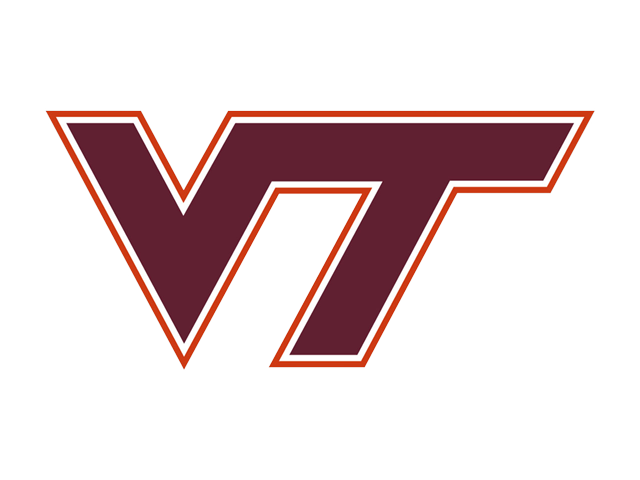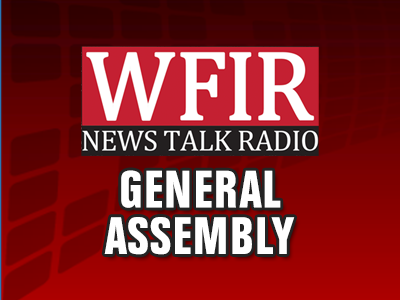 Democrat Abigail Spanberger holds a 10-point lead over Republican Winsome Earle-Sears (51%-41%) in the November election for governor of Virginia, according to the Roanoke College Poll. Only 4% of likely voters are undecided, and 1% said they would vote for someone else. The Institute for Policy and Opinion Research (IPOR) at Roanoke College interviewed 1,041 likely voters in Virginia between Oct. 22 and Oct. 27, 2025. The survey has a weighted margin of error of 4.05%.
Democrat Abigail Spanberger holds a 10-point lead over Republican Winsome Earle-Sears (51%-41%) in the November election for governor of Virginia, according to the Roanoke College Poll. Only 4% of likely voters are undecided, and 1% said they would vote for someone else. The Institute for Policy and Opinion Research (IPOR) at Roanoke College interviewed 1,041 likely voters in Virginia between Oct. 22 and Oct. 27, 2025. The survey has a weighted margin of error of 4.05%.
In the race for lieutenant governor, Democrat Ghazala Hashmi leads Republican John Reid (42%-40%), while Republican incumbent Jason Miyares now leads Democrat Jay Jones (46%-38%) in the race for attorney general.
Two-thirds (67%) of likely voters are very enthusiastic about voting, and 23% are somewhat enthusiastic. Threats to democracy (29%) and inflation (24%) were named by respondents as the most important issue in the election, followed by immigration (12%), taxes (5%), abortion (5%), and crime (5%).
Job Approval and Favorable/Unfavorable
President Donald Trump’s job approval rating (40%) is essentially unchanged from the last Roanoke College Poll in August. Gov. Glenn Youngkin’s job approval rating (50%) is the same as August, but his disapproval declined by 7 percentage points.
Spanberger’s rating (47% favorable/42% unfavorable) shows an increase in both numbers from August. The same is also true for Earle-Sears (38% favorable/45% unfavorable).
Impact of Jay Jones’ Texts
A large majority of likely voters (80%) say they have heard or read about texts sent by Jay Jones in 2022, in which he fantasized about shooting then-House of Delegates Speaker Todd Gilbert.
We asked respondents about the impact that information had on their vote. Of the early voters who already cast their ballot for Jones, 87% said they would have voted for Jones anyway, while only 1% said they would have switched their vote to Miyares. Another 5% said they would not have voted in that election, and 8% declined to answer.
Analysis
“Like most elections, this one will be determined by voter turnout and how independents vote,” said Dr. Harry Wilson, interim director for IPOR and professor emeritus of political science at Roanoke College. “While Spanberger appears to have maximized her Democratic support, Earle-Sears could slightly increase her support among Republicans, and she needs to make more inroads with independents with very little time left to do so.”
“The races for lieutenant governor and attorney general are both within the poll’s margin of error, though the latter just barely so. Reid has done well to solidify his partisan support but needs a little help from independents, while Hashmi could do better with her partisans.”
“While Jones has clearly lost some support among Democrats, they have not moved over to support Miyares, suggesting they may either ‘come home’ in the end or simply not vote in that race. As concerning for Jones, Miyares now narrowly leads among independents. It may be unprecedented to see such a divergence between the race for governor and attorney general. Everyone who ever contemplates running for public office might consider holding their tongue and stilling their hands on occasion.”
Methodology
The Roanoke College Poll was conducted by the Institute for Policy and Opinion Research (IPOR) at Roanoke College in Salem, Virginia, between Oct. 22 and Oct. 27, 2025. All data was collected by the Siena Research Institute at Siena University in Loudonville, New York. A total of 1,041 completed interviews came from telephone calls and text messages to registered voters in Virginia. Registered voters were screened for likelihood to vote. Interviews were terminated if the respondent was not a Virginia resident, if they were not very likely or almost certain to vote, or if they were not the person named on the record. Interviews were conducted in English.
The sampling frame was created by generating a random subset of Virginia registered voters provided by L2. Prior to making phone calls to cellphones, potential respondents would receive a text message (MMS) with an invitation to complete the survey on their own before we called them. Five hours after receiving a text message, phone calls were made to those who did not respond to the text message invitation. In all cases where the sample had both a cellphone number and landline number, calls were made to a potential respondent’s cellphone number.
Of the 1,041 responses, 97 (9%) were landline interviews, 442 (43%) were cellphone interviews, and 502 (48%) were completed by text to web. Three attention checks, survey completion time, and a manual review of all data were used to ensure quality control and data integrity for all web completions.
Interviews conducted online are excluded from the sample and final analysis if they fail any data quality attention check question. Duplicate responses are identified by their response ID and removed from the sample. Three questions are asked of online respondents, including a honey-pot question to catch bots and two questions asking the respondents to follow explicit directions. The proprietary panel also incorporates measures that “safeguard against bot attacks, deduplication issues, fraudulent VPN usage, and suspicious IP addresses.”
Questions answered by the sample of 1,041 likely voters are subject to a weighted margin of error (including design effect) of plus or minus 4.05% at a confidence level of 95%. This means that in 95 out of 100 samples such as the one used here, the results should be at most 4.05 percentage points above or below the figure obtained by interviewing all likely voters in Virginia with a home telephone or a cellphone. Where the results of subgroups are reported, the margin of error is higher. Sampling error is only one of many potential sources of error, and there may be other unmeasured error in this or any other public opinion poll.
Quotas were used to ensure that different regions of the commonwealth were proportionately represented. The data were statistically weighted for gender, race, age, education, and political party. Weighting was done to match the 2021 Virginia exit poll. The design effect was 1.776.



